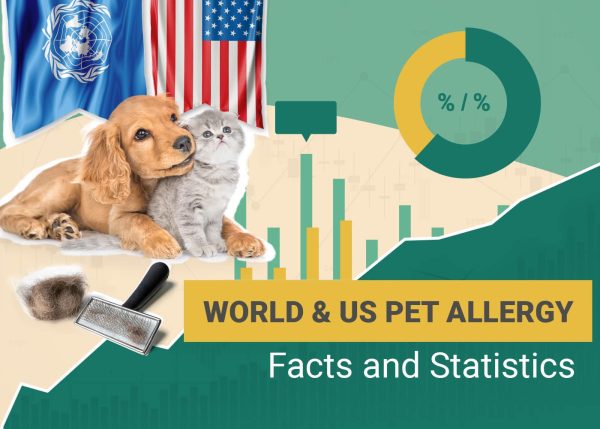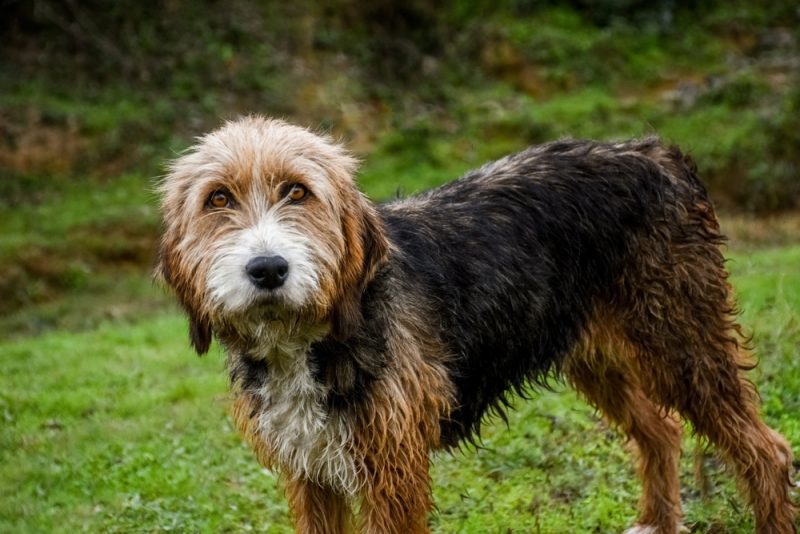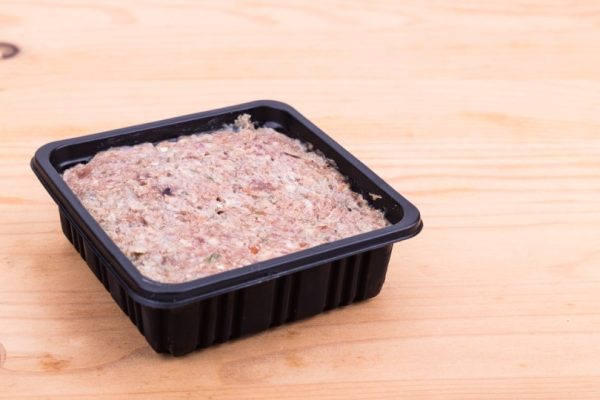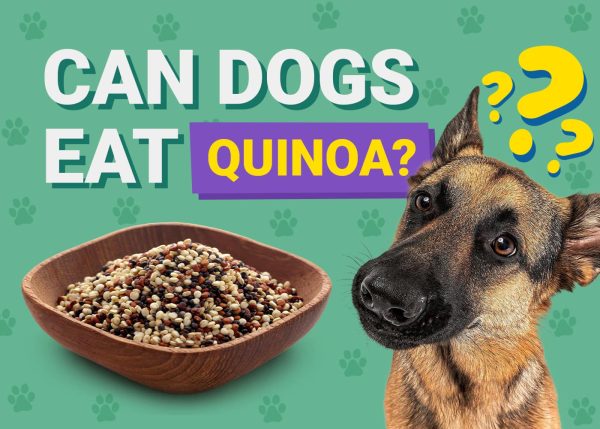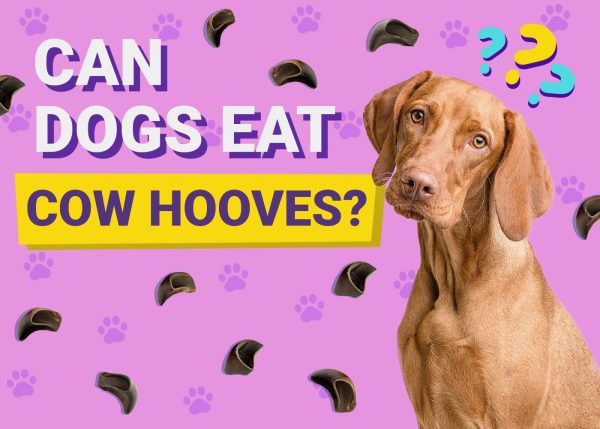In this article
If you were hoping for a flea and tick-preventative-free winter, you’re about to be disappointed. Though they are often considered just warm weather pests—and it’s true that they do prefer warmer climates—fleas can still hop onto your dog in the winter months.
In this post, we’ll explain why it’s important for dogs to receive flea and tick treatments throughout the year.

Can Fleas Survive in Cold Climates?
Yes, they can, aided by the warmth of a dog’s body or another cozy environment. An adult flea can lay a large number of eggs—eggs that can survive in cold temperatures—during its lifetime.
Adult fleas can live for up to 100 days (2–3 months), and it is estimated that a single female flea can lay up to 50 eggs in one day, provided the temperature and conditions are adequate.1 The eggs will fall off your dog as they move, which means eggs will spread throughout the environment where your dog spends their time. Flea larvae hatch from eggs in one to ten days. They feed on organic debris, don’t like sunlight, and live in moist, dark areas such as your dog’s bedding, carpeting, and under baseboards.
Larvae turn into pupae by enclosing themselves in a sticky, silk‐like cocoon. They usually emerge as adult fleas one to two weeks later but can stay in their cocoons for weeks or months at a temperature of 51.8 degrees Fahrenheit waiting for a host—like your dog—to live on.2
Though fleas can’t sustain near-freezing temperatures for long periods (their ideal temperature is around 75 degrees Fahrenheit), which is why they’re less copious in the winter months, their eggs can still hatch in winter and infest dogs and other animals, and then spread to and survive in areas that remain warm and humid even in cold weather.
These areas may include your home or outdoor spaces like yards, barns, and sheds, which is another reason why it’s so important to keep up with flea and tick treatments, no matter what time of year it is.
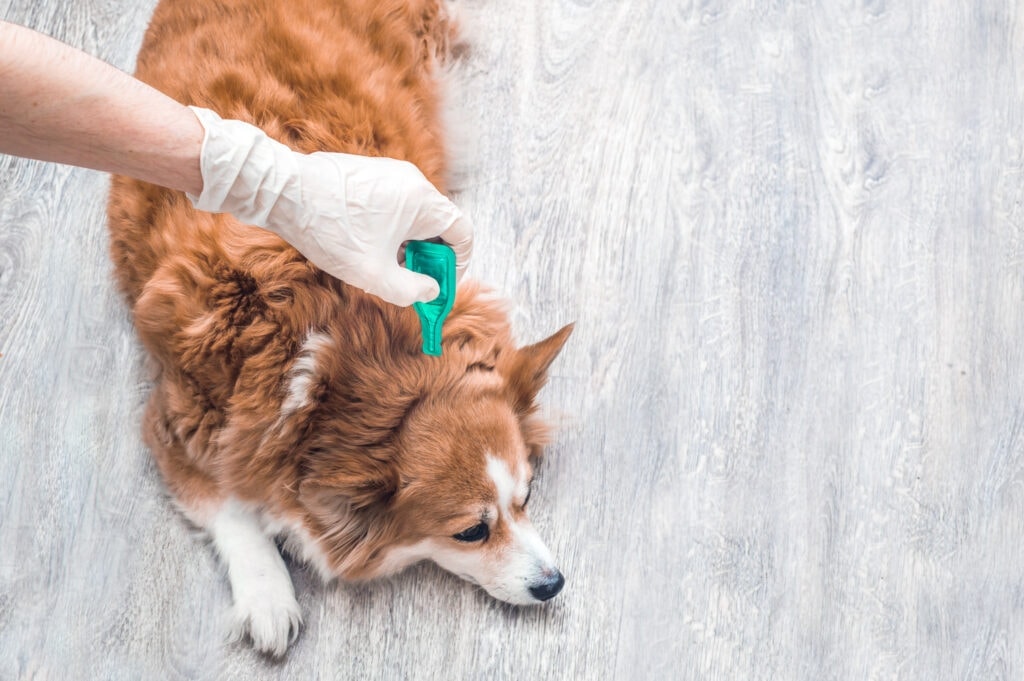
What Are the Signs That a Dog Has Fleas?
Dogs catch fleas when a flea jumps onto the dog’s body—they do not fly. The fleas then survive by feeding on the dog’s blood, which can lead to various potential health issues ranging from mild to severe. A very important point is that adult fleas (the ones that you can see on your dog) only represent 5% of the total flea population, while immature stages (eggs, larvae, and pupae) remain the non-visible part spread in the environment.
The conditions dogs can develop as a result of a flea bite can be divided into infectious problems and skin-related issues. The flea-borne pathogens that fleas can transmit to your dog include tapeworm infection (Dipylidium caninum) and bacterial infections: Bartonella and Rickettsia.
With regard to skin problems, dogs can suffer from itchy and red skin with occasional hair loss or very severe lesions if they suffer from flea-allergic dermatitis. Heavy infestations from these blood-sucking parasites can even lead to anemia in small puppies.
- Scratching (some dogs can still have fleas but not scratch)
- Biting at the skin
- Matting or hair loss
- Scabbiness
- Small red marks on the skin
- A sort of brown dirt that looks like coffee grounds (this is flea poop, basically)
- Irritability
- Tiredness
- Pale gums (a sign of anemia)
If you spot the actual fleas, they will be a reddish-brown or copper shade. They’re not easy to see because they’re so tiny, especially if the dog has a dark-colored coat, but you might be able to spot a few because they have large back legs.
Your best chance of seeing a flea is by looking deep within the fur of your dog, particularly around the belly and inner thigh area.
How to Get Rid of Fleas on a Dog
The best thing is to be proactive year-round by talking to your vet and applying external parasite preventatives on a monthly basis. These include flea and tick treatments as well as treatments for other common dog parasites. If it’s too late and your dog has already got fleas, you’ll want to act quickly and decide on a course of action.
One of the additional treatment options is bathing your dog with lukewarm water and either mild soap or flea shampoo. Before you use a flea shampoo, call your vet to ask if it would be appropriate, because it can make matters worse for dogs with sensitive skin or wounds from scratching. Moreover, you can comb your dog with a fine-toothed comb designed for this purpose.
If you haven’t already, start giving your dog and any other dogs and cats you have (regardless if they are not showing any signs of fleas), regular parasite preventatives, which are typically applied every 30 days or so. Speak to your vet about the most suitable product for your pets. Nowadays, there are many options, including spot-on, collars, and tablets.
Note: Some dog flea spot-on treatment products on the market are based on Pyrethrins. These compounds are safe for dogs but highly toxic to cats and to aquatic life. Extreme care should be practiced to avoid accidents. If you also have a cat, it is recommended to keep your pets separated to avoid ingestion in case your cat licks or grooms a flea or tick medication off your dog.
Consult with your veterinarian before applying any treatment to your dog. Do not allow your dog to swim in lakes or oceans after pyrethrin treatment application. Never use a pyrethrin-based product in the same room you keep a fish tank. Use gloves and keep away from children. Kindly dispose of the bottles considering safety precautions.
If you need to speak with a vet but can't get to one, head over to PangoVet. It's an online service where you can talk to a vet online and get the personalized advice you need for your pet — all at an affordable price!
What If Fleas Are in My Home?
In addition to getting fleas off your dog, you’ll want to go ahead and deep clean your entire home, including outdoor areas like yards if your dog frequents these. Thoroughly vacuum your home—not just the floors, but also the upholstery, mattresses, and any nooks and crannies fleas or their eggs could be hiding in.
You can also use a steam cleaner to tackle upholstery and carpets. Be sure to also wash your and your pet’s bedding and dry it at the highest possible heat. As well as cleaning, washing, and vacuuming your home, you may need to use a special home flea spray. The spray stops the development of flea eggs and larvae and kills adult fleas in hard-to-reach areas, such as cracks in the floor, skirting boards, and furniture.
Use a flea spray in every room after vacuuming, and take the time to do this well. Make sure you read carefully and follow the instructions on the packaging about dosage and frequency. Keep your pet and family away while it works.

Conclusion
To recap, contrary to common belief, dogs can absolutely get fleas in winter, which can then lead to an infestation of your home and surrounding areas if the critters find a nice, warm, humid spot.
For this reason, it’s best to never assume your dog, you, or your home is safe from a possible flea infestation in winter—stick to regular flea and tick preventatives to save yourself the potential infestation.
Featured Image Credit: Yan Krukau, Pexels







